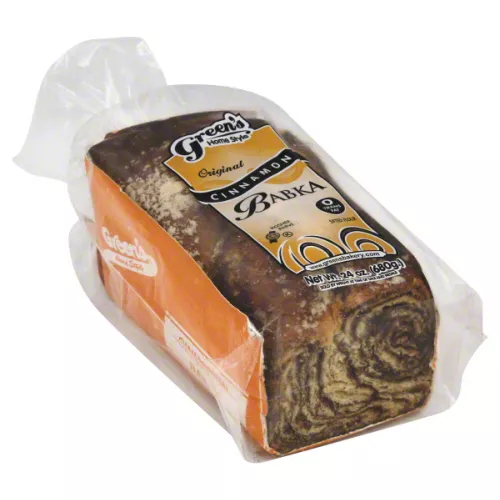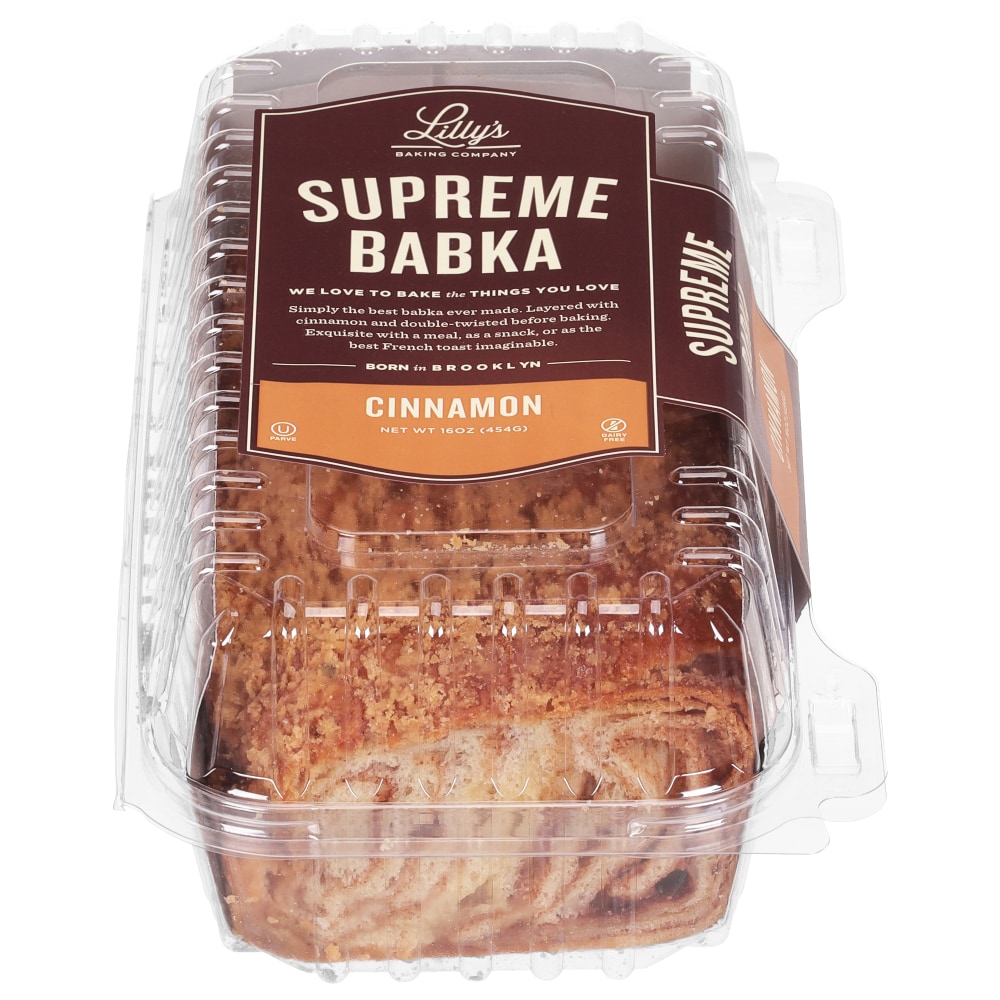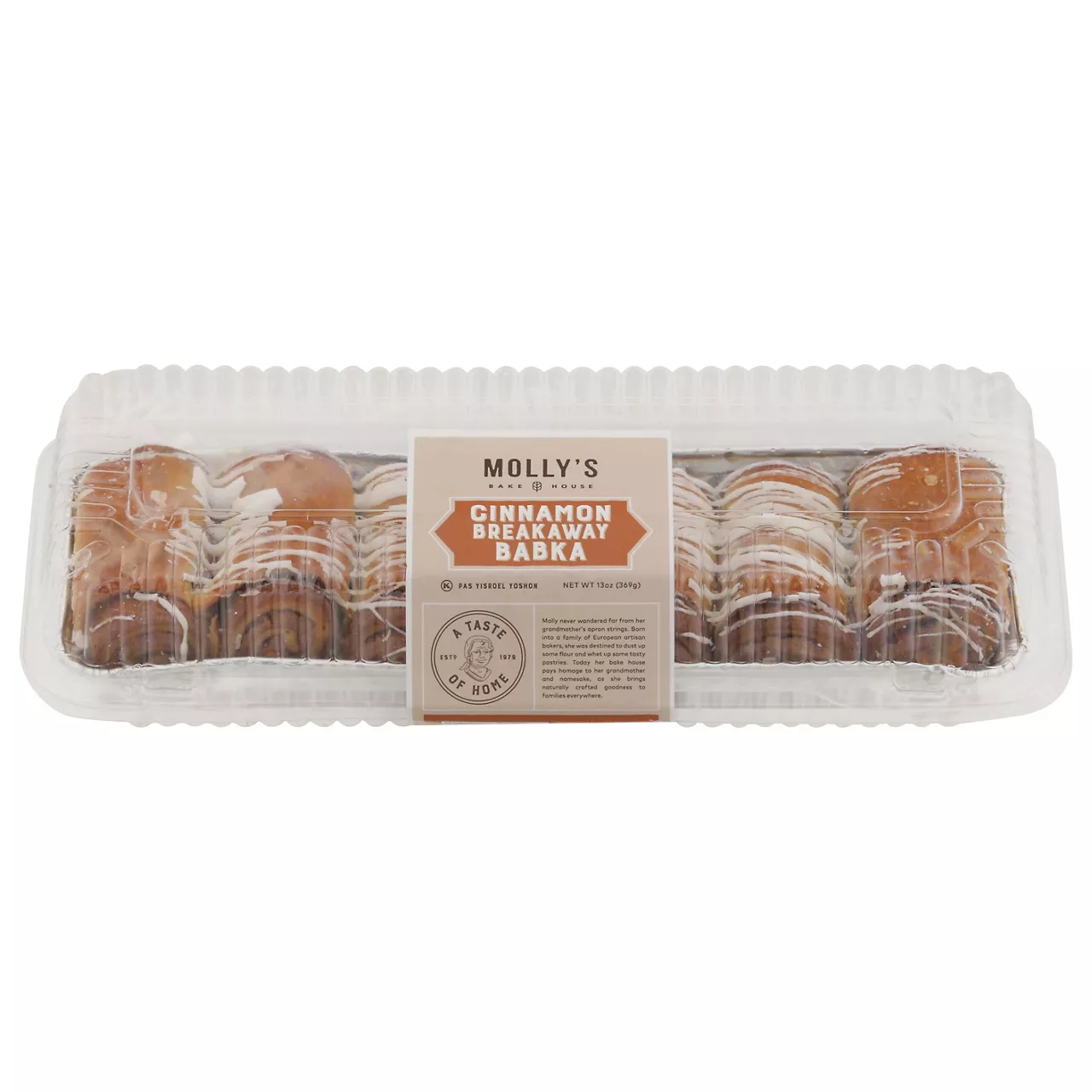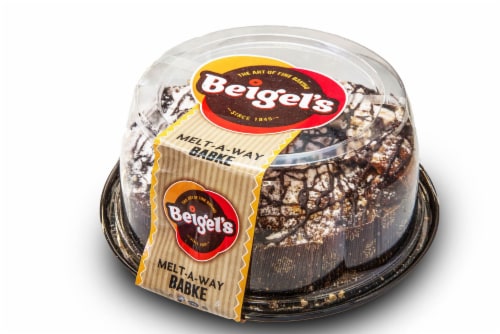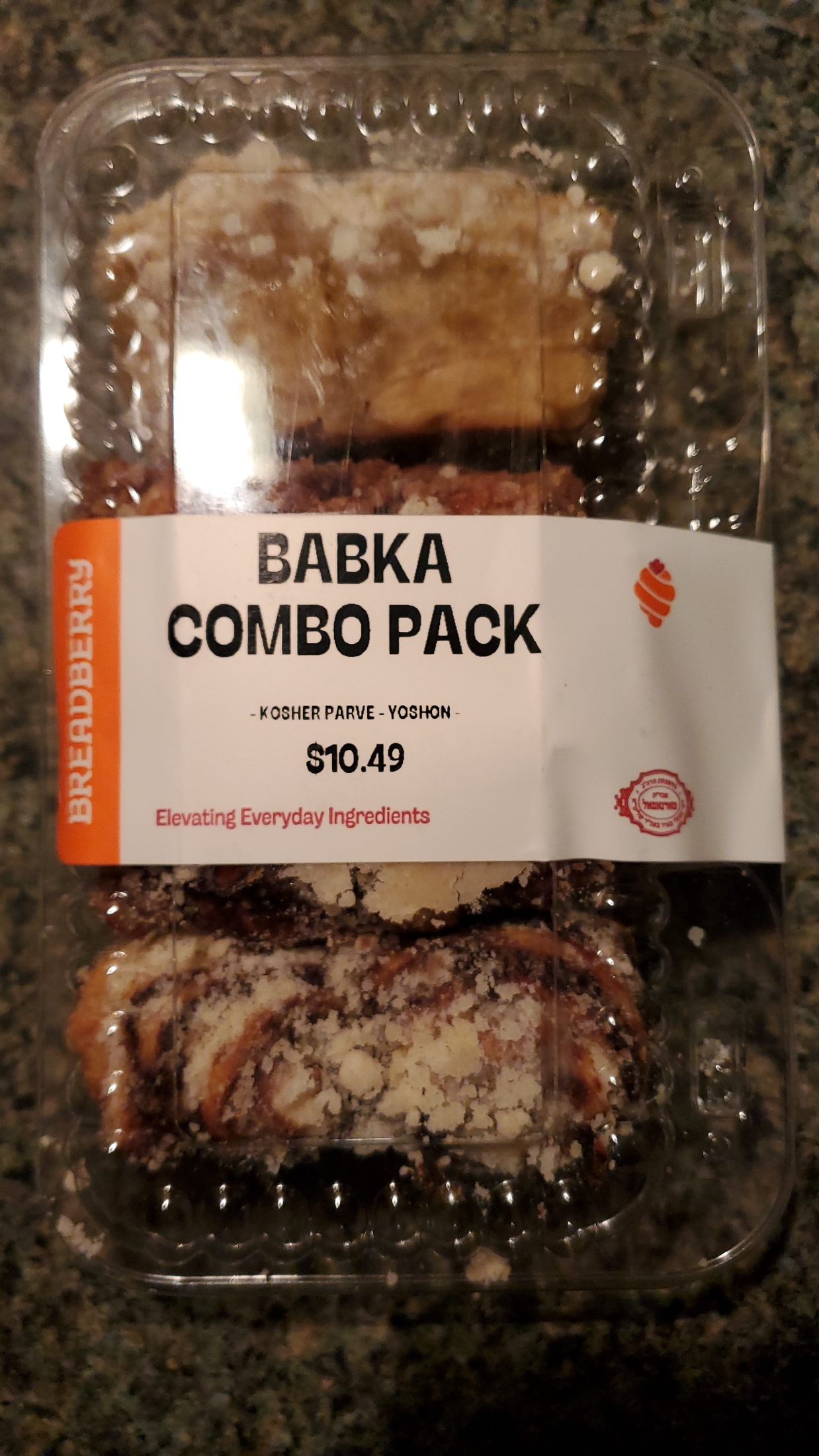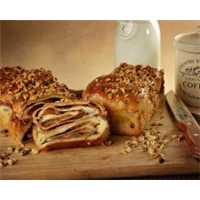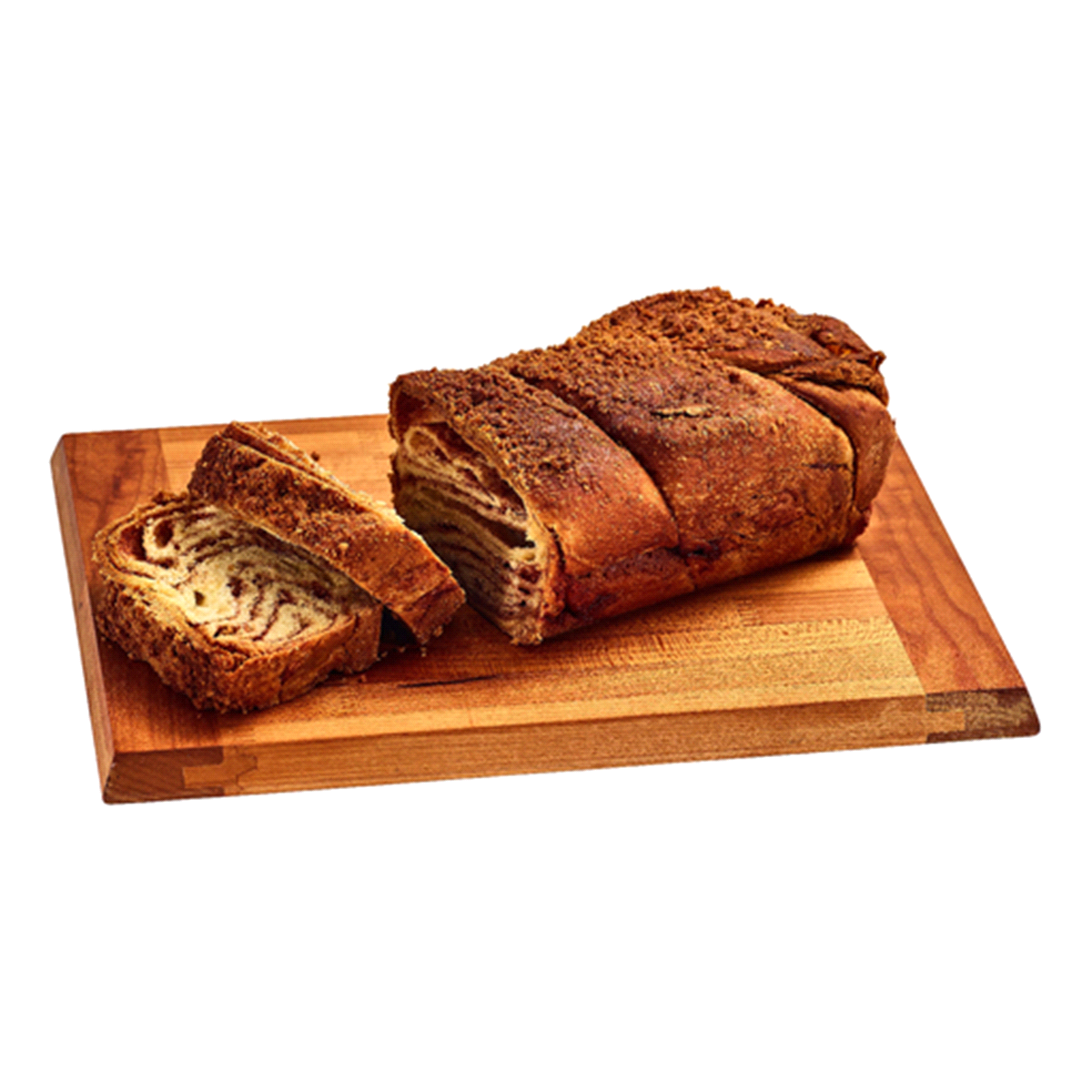Babka
Babka is a sweet, braided bread or cake originating from Eastern European Jewish tradition. Known for its distinctive swirls and rich, flavorful ingredients like dark chocolate or cinnamon, Babka is a delightful treat that is both visually stunning and delectably satisfying.
This bread is perfect for those who enjoy baking at home. Whether served on special occasions or just as a weekend indulgence, Babka is not just a baking project, but an experience of comforting, home-made flavor crowned with a touch of artistic presentation.
77%
CARBS
17%
FAT
7%
PROTEIN
24 Babka Products
Green's Babka, Cinnamon, Original
Lilly's Supreme Cinnamon Babka
Molly's Bake House Breakaway Babka, Cinnamon
Lilly's Baking Company Classic Cinnamon Babka Bread
Beigel's Melt-A-Way Babke
Babka Combo Pack
Fairway Babka Cinnamon Apple
Babka Supreme Cinnamon
Beigel's Babka, Cinnamon, Signature
Babka Bread - Cinnamon Supreme, 16 oz.
Babka FAQ
Babka is often a source of curiosity in home kitchens due to its unique structure and tantalizing taste. However, it can also be a slightly daunting dish due to the kneading, rising, shaping and filling process. Common questions revolve around getting the dough consistency right, filling and shaping the babka, and achieving the perfect bake. People often go wrong with the yeast activation, dough consistency, or overbaking which leads to a dry Babka.
To get the most out of the Babka, consider using high quality ingredients since Babka is indulgence bread and the flavors should be rich and rewarding. A good tip is to be patient with the kneading and rising process—it’s essential for a fluffy and light Babka. Additionally, rotating the pan halfway through the baking process ensures an evenly baked babka.
A little known tip is that the dough of the babka can be refrigerated overnight. This not only makes the dough easier to shape, but also allows the flavors to develop, resulting in a more flavorful bread.
What kind of yeast is best for Babka bread?
How do I know my dough has been properly kneaded?
Why is my Babka dry and tough, not tender and soft?
How do I get the chocolate or cinnamon filling to spread evenly?
How can I get distinct swirls in my Babka?
Why isn’t my Babka rising well?
Can I make Babka dough ahead of time?
Can I put Babka dough in the freezer?
Is there a vegan version of Babka?
Why is it important to let the baked Babka cool before slicing into it?
Health Info
Macros
11g
CARBS
3g
FAT
1g
PROTEIN
Allowed on these diets
LOW FAT
HIGH CALCIUM
VEGETARIAN
Contains these allergens
MILK
EGGS
WHEAT

